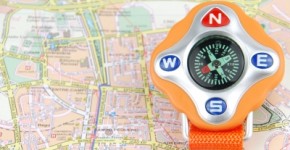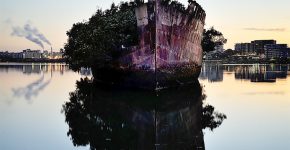5 Travel Destinations that Don’t Need Photoshop to Look Amazing in Photos
![By Mario Carvajal (Own work) [CC-BY-3.0 (http://creativecommons.org/licenses/by/3.0)], via Wikimedia Commons](https://mrpassenger.com/wp-content/uploads/2014/03/colorful-river.jpg)
By Mario Carvajal (Own work) [CC-BY-3.0 (http://creativecommons.org/licenses/by/3.0)], via Wikimedia Commons
Photoshop is no stranger to photos that feature travel destinations. It is an oft-abused option to make things look better than they actually are. Photos are typically edited to make sunsets look vivider, green scenery look livelier, and blue seas look pleasantly turquoise or cyan. However, there are tourist spots that don’t need any Photoshop work at all.
The following spots are examples of mind boggling natural colors and color combinations that will make for impressive photos even in the absence of Photoshop enhancements. They look psychedelic in their stunning visuals. These places are definitely worth the visit.
1. Namibia Park
![By Yathin S Krishnappa (Own work) [CC-BY-SA-3.0 (http://creativecommons.org/licenses/by-sa/3.0)], via Wikimedia Commons](https://mrpassenger.com/wp-content/uploads/2014/03/Namib-Naukluft-Sand-Dunes.jpg)
By Yathin S Krishnappa (Own work) [CC-BY-SA-3.0 (http://creativecommons.org/licenses/by-sa/3.0)], via Wikimedia Commons
The photo above looks like some impressionist painting but it’s a real photo of the Namib-Naukluft National Park in Namibia. The surreal photo looks unusually artsy because of the strong flame orange backdrop of sand dunes. Click here to view another impressive unrealistic-looking photo of the park.
The park has a total area of 49,768 square kilometers, making it Africa’s largest game park and the fourth largest worldwide. If you decide to visit this place, you will not only be enjoying the fantastic landscape, you also get to see in person what is considered as the oldest desert in the world, the Namib Desert. Additionally, the hyper-arid region also has a surprising number of animals including peculiar insects, jackals, geckos, snakes, and gemsboks.
2. Tulip Fields in Lisse
![By Alessandro Vecchi (Own work) [CC-BY-SA-3.0 (http://creativecommons.org/licenses/by-sa/3.0)], via Wikimedia Commons](https://mrpassenger.com/wp-content/uploads/2014/03/Tulips-in-Lisse.jpg)
By Alessandro Vecchi (Own work) [CC-BY-SA-3.0 (http://creativecommons.org/licenses/by-sa/3.0)], via Wikimedia Commons
This photo is not even the best of what Holland’s gardens of tulips have to offer. If you visit Lisse, especially the tulip gardens of Keukenhof, expect a stunning array of colors of real flowers that stretch into acres of land. These colors include vibrant yellow, red, blue, and pink.
Schedule your visit in spring to catch the tulips in bloom as well as to witness the grand flower parade called Bollenstreek Bloemencorso. You will only get to see these bright surreal colors from March to August so be sure to fix your schedules first before heading to Holland if you are specifically looking forward to the tulip blossoms.
3. Nevada’s Fly Ranch Geyser
This one of a kind geyser may not fully be a product of nature but the colors that make it distinctive and majestic is nature’s doing. Located in Washoe County, Nevada, Fly Geyser is a cone-type geyser that was accidentally created while a well was being drilled in 1964 in the course of exploring sources of geothermal energy.
They geyser has been releasing various minerals into the surface and has created more than 30 pools around its area. The attractive multicolor cone of the geyser is caused by the growth of thermophilic algae.
4. Caño Cristales
![By Mario Carvajal (Own work) [CC-BY-3.0 (http://creativecommons.org/licenses/by/3.0)], via Wikimedia Commons](https://mrpassenger.com/wp-content/uploads/2014/03/Caño-Cristales.jpg)
By Mario Carvajal (Own work) [CC-BY-3.0 (http://creativecommons.org/licenses/by/3.0)], via Wikimedia Commons
No, what you’re seeing in the photo above is not a painting or a manipulated image of a stream. It’s a real photo of Caño Cristales, a Colombian river known of its multicolored waters. It is also called “The Liquid Rainbow” and “The River of Five Colors” because of its marvelously striking colors that include green, blue, yellow, red, and black. There’s nothing to worry about touching the colorful waters. Worry not, these aquatic colorations are not the result of some industrial toxic leak but a manifestation of the thriving of the algae Macarenia clavigera.
The river is inhabited by various plants and corals. However, it does not have fish living in it due to the excessive concentrations of sedimentary materials. If you want to witness the impressive colors of this river’s waters, the recommended time to visit is from late July to early December. The river is situated in Serrania de la Macarena in the province of Meta.
5. Lake Hillier
![Photographs by Gnangarra...commons.wikimedia.org [CC-BY-2.5-au (http://creativecommons.org/licenses/by/2.5/au/deed.en)], via Wikimedia Commons](https://mrpassenger.com/wp-content/uploads/2014/03/Pink-Lake.jpg)
Photographs by Gnangarra…commons.wikimedia.org [CC-BY-2.5-au (http://creativecommons.org/licenses/by/2.5/au/deed.en)], via Wikimedia Commons
Looking at this pink lake closely may not impress you but taking a photo of the entirety of this Australian lake from a distance means an unusual image of an inland body of water with an incredible pink color. Many air passengers easily notice the lake and marvel over its interesting appearance.
The lake is located on Australia’s Middle Island. You can visit it at any time of the year since the color is permanent. The real reason for the pink coloration has not been ascertained yet but it is believed to be caused by the growth of Dunaliella salina or the thriving of red halophilic bacteria in the salt crusts of the lake.
Click here for a more beautiful photo of this magnificent lake.
Consider visiting these great places and see for yourself how many of nature’s wonderful spots don’t really need Photoshop editing. Let your eyes feast on the amazing array of extraordinary natural colors. Enjoy the sights and sounds. Just don’t forget to be ready for the trip and make sure that you have a good camera with you.
![By Jeremy C. Munns (Own work) [Public domain], via Wikimedia Commons](https://mrpassenger.com/wp-content/uploads/2014/03/Fly-geyser.jpg)





